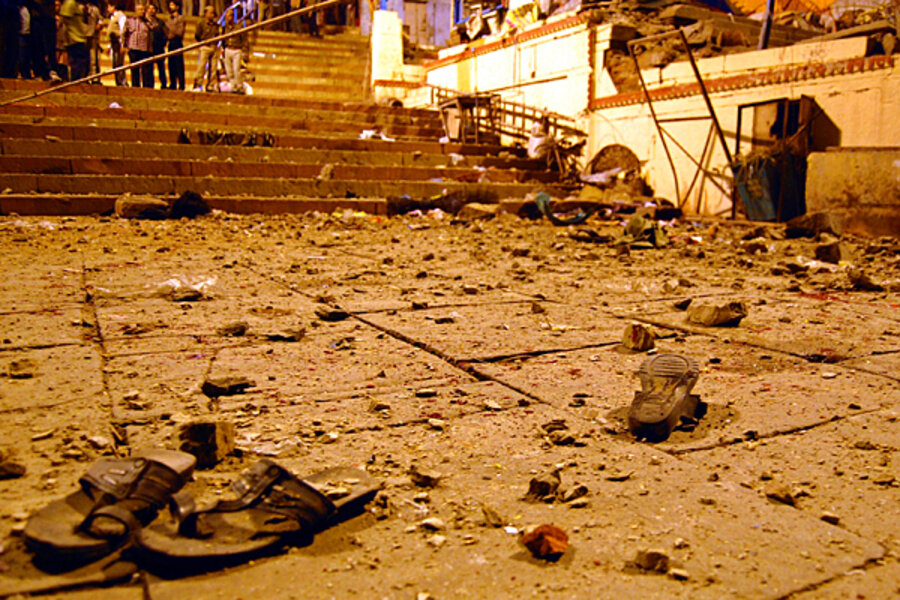Explosion rocks one of India's holiest cities
Loading...
| New Delhi
Islamist militants are being blamed for an explosion that killed at least one person and wounded more than 20 others at one of Hinduism’s holiest sites Tuesday evening.
The blast went off during a Hindu ceremony by the river Ganges in Varanasi, an ancient pilgrimage city in the northern Indian state of Uttar Pradesh at around 6:45 pm. Police were immediately put on high alert in India’s big cities.
Several television channels and newspapers said they had received e-mails from an Islamist militant group, the Indian Mujahadeen (IM), claiming it was behind the blast.
The official investigation is just beginning. But Indian security pundits say the IM is an obvious suspect: The group has carried out a string of bombings in Indian cities, most recently in the southern city of Pune this February. It is linked to the Pakistan-based Lashkar-e-Taiba militants who were behind the Mumbai attacks of 2008.
A police officer told local journalists a bomb appeared to have been hidden in a container on one of the ghats – stone staircases – that lead down to the Ganges, where people gather to say their prayers and bathe, particularly at sunrise and sunset.
The bomb is thought to have killed a baby girl and injured at least 20 more, including an unknown number of foreigners.
Pilgrims and tourists
Perhaps India’s holiest city, Varanasi – also known by its older name of Benares – is always packed with Hindu pilgrims and foreign tourists.
Some analysts say the IM is focusing on foreigners. The group was suspected of involvement in machine gun attack on tourists in the capital, New Delhi that wounded two foreigners in September, in the run-up to the Commonwealth Games.
An offshoot of the banned Students’ Islamic Movement of India, the IM first emerged in 2007 and 2008. Intelligence officials allege its operatives are being trained in Pakistan. They also say its threat has been reduced in recent months thanks to successful security operations.
Police have been especially vigilant in Uttar Pradesh in recent months, following a controversial ruling over a religious site that has long divided India’s Hindu majority and Muslim minority. In September, a high court in the state ruled that a site in the town of Ayodhya should be divided between Hindu and Muslims groups, with the majority share going to Hindus.
In 1992, Hindu zealots had torn down a 17th century mosque at the site, unleashing India-wide riots that killed 2,000 people, most of them Muslim.
The issue of the Babri Masjid (mosque) has lost some of its power to mobilize mass unrest in recent years. India’s Muslim community, though long marginalized and discriminated against, has been largely peaceful. Despite fears of a backlash after September’s ruling, the state remained peaceful in the aftermath of the ruling.
Varanasi is no stranger to militant attacks. In March 2006, twin bombings blamed on a Pakistan-based Islamist militant group tore through a train station and a temple in the city, killing 20 people.





